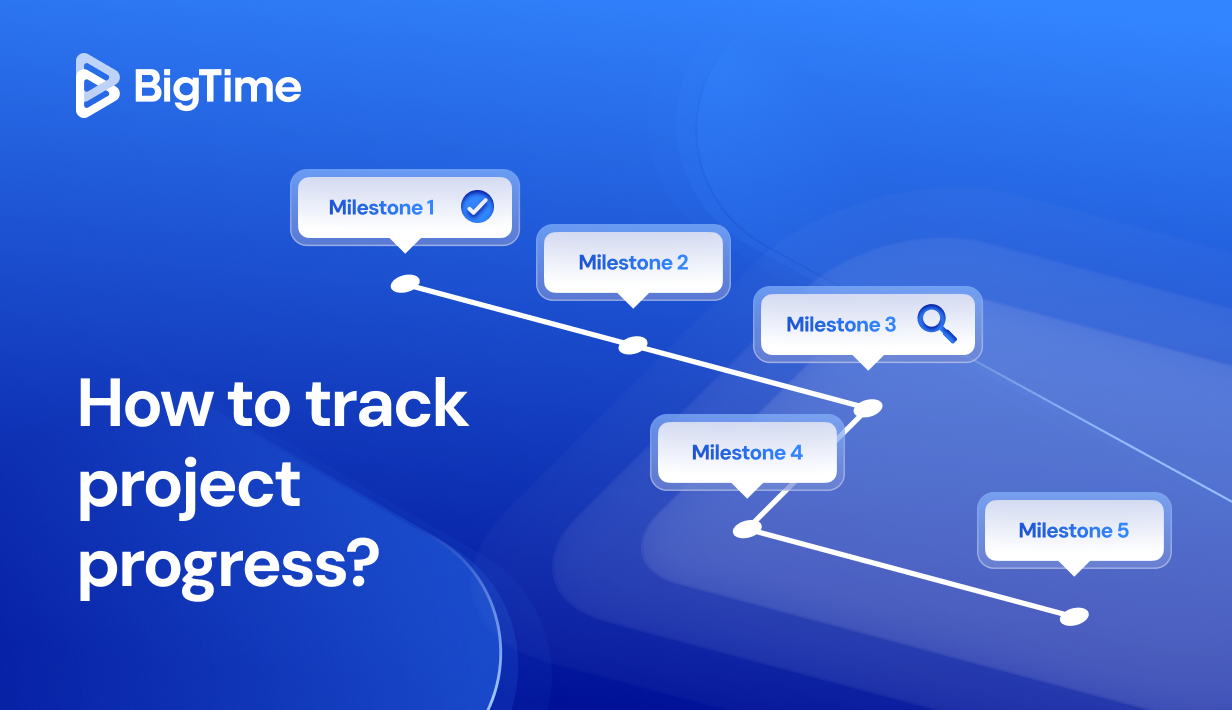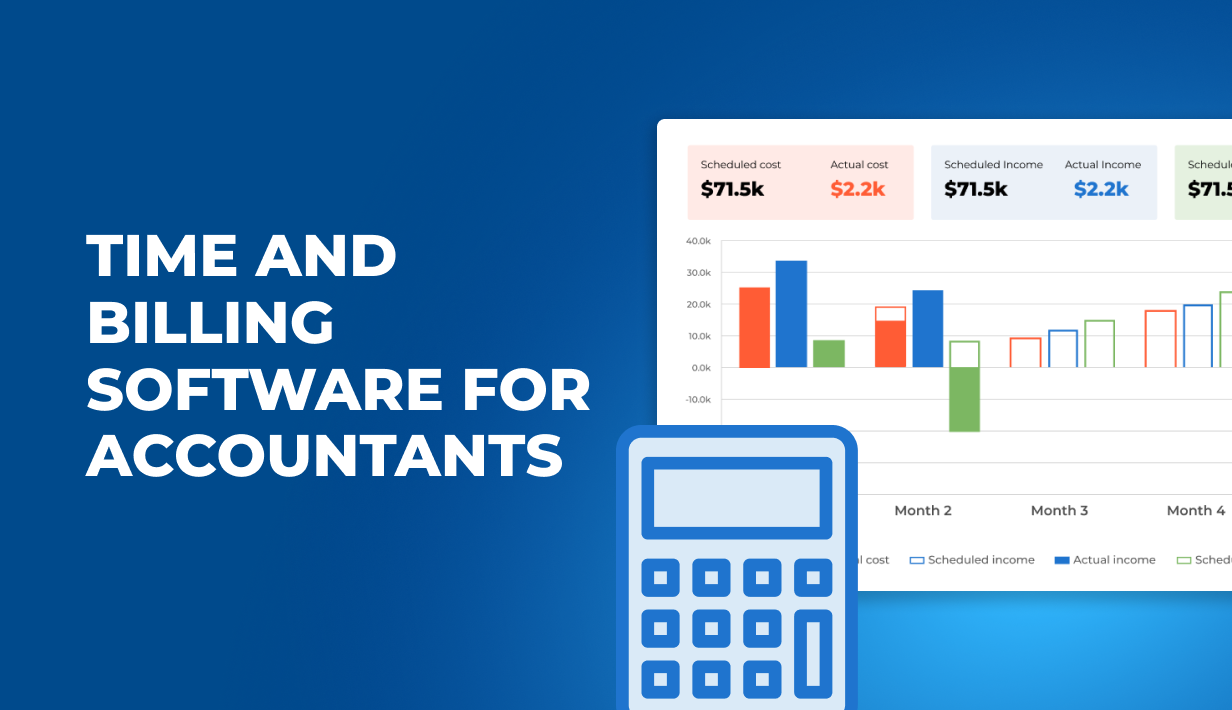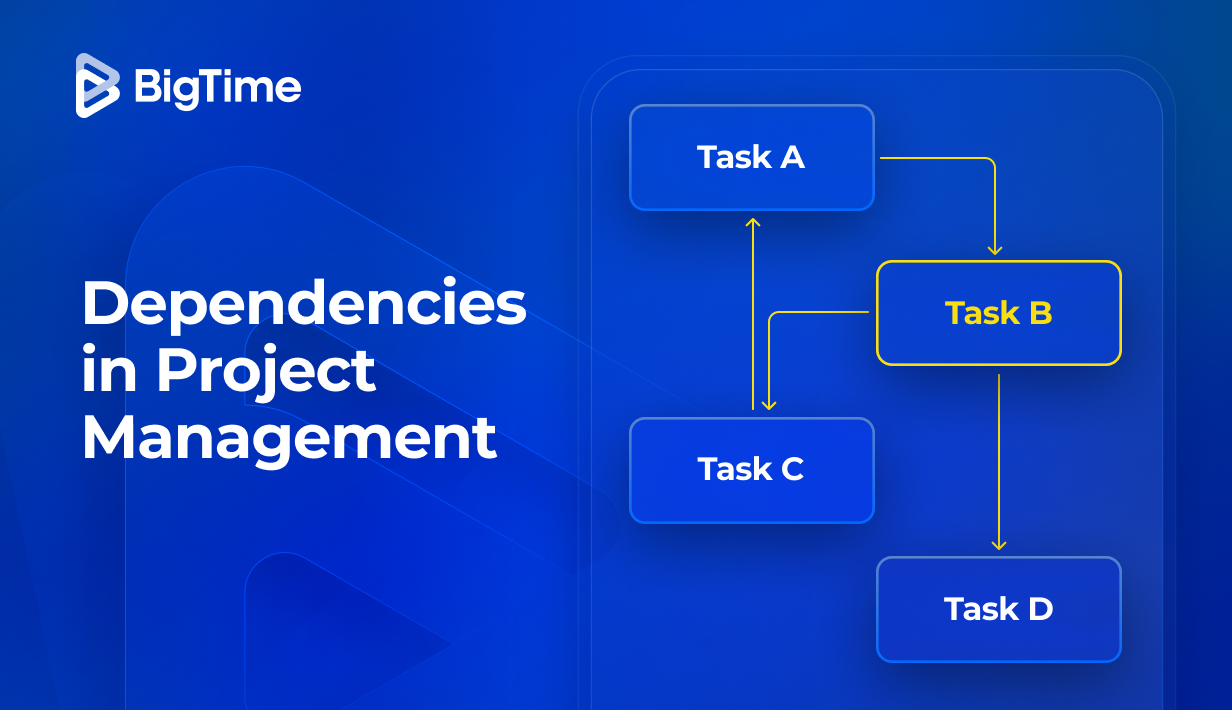Managing projects without a clear system to measure progress can quickly lead to missed deadlines, wasted resources, and frustrated clients. That’s why knowing how to track project progress is essential for every project manager. Whether you’re running a small internal project or managing a complex, multi-phase operation, having the right strategies and tools for project tracking in place will determine your success.
In this guide, we’ll explore the fundamentals of project tracking, explain how to track progress of a project step by step, and recommend the best project tracking software to help you achieve high-performance project delivery.
What is project tracking?
Project tracking is the process of monitoring a project’s progress against its planned goals, project milestones, budget, and deadlines. It involves collecting and analyzing real-time data to ensure that tasks are completed on time, resources are used efficiently, and deliverables align with client expectations.
Unlike simple task lists, project tracking provides a holistic view of the project lifecycle. It allows managers to see not only what has been done but also what lies ahead, making it easier to anticipate risks and adapt quickly when priorities shift. In other words, project management tracking is the backbone of successful project delivery, offering both structure and flexibility.
Key benefits of project tracking
Tracking project scope and progress is not just about ticking off tasks on a list. It’s about ensuring efficiency, accountability, and alignment across your entire team – and those are just a few benefits of keeping an eye on the project plan. Others include:
- Real-time visibility. Project tracking provides instant updates on milestones, deadlines, and budget, helping managers see exactly where the project stands.
- Smarter resource management. With clear oversight, project teams can assign the right people to the right tasks, avoiding both underuse and burnout.
- Better budget control. By comparing planned vs. actual spending, tracking helps prevent overruns and keeps project budget under control.
- Early risk detection. Monitoring project progress helps identify delays, scope creep, or cost issues before they escalate.
- Higher chances for a successful project. Projects tracked with KPIs and tools are more likely to finish on time, within budget, and at the expected quality than the ones that do not monitor their project goals.

How to track project progress?
If you want to master how to track progress of a project, you need a structured process that goes beyond simple checklists. Here’s a step-by-step approach that ensures efficiency and accountability.
Prepare a project timeline
To ensure that your project tracking reflects the actual progress of your project, start with creating a project timeline. First, start with choosing the right goals using the SMART framework — goals that are Specific, Measurable, Achievable, Relevant, and Time-bound. This ensures your progress is not only visible but also measurable against real outcomes.
Next, outline the scope of work by listing everything that must be completed. Break it into deliverables (major outputs of the project), milestones (key checkpoints), and project phases. These act as markers of progress and help communicate achievements to both the team and stakeholders. Then, move on to resource allocation to ensure that your project actually has the resources it needs – especially when your specialists are working in multiple projects at the same time.
Finally, assign realistic deadlines to each stage of the project. Deadlines keep tasks prioritized and prevent the entire project from drifting off schedule. Aligning stage deadlines with the overall project finish date ensures that every step contributes to timely delivery.
Keep your project trackers up to date
Even the best project plan can fail if progress isn’t monitored in real time. Still, project managers often adjust project data as the project evolves, or have to account for the changes requested by the customers. If these updates aren’t reflected in your tracker, the team risks working with outdated information. Therefore, logging any changes as soon as possible, especially in complex projects, is vital for their success.
Still, constant updates are just a part of the solution – time tracking is the rest. By logging hours worked, teams can compare actual progress against planned project schedule. This live data helps managers identify bottlenecks before they impact delivery and optimize team productivity while the project is well under way.
Monitor project status regularly
Consistent monitoring is the key to knowing exactly how to track project progress without falling behind. Still, without knowing which project management KPIs to track, implementing effective project tracking strategies might be difficult. Therefore, before you jump into project reporting, define clear project KPIs—such as milestone completion rates, budget variance, or resource utilization—and track them consistently to measure project progress.
Once you have the right project metrics, make sure you have the time to keep an eye on them. Schedule weekly or biweekly check-ins to review progress with the team or block your calendar to generate project status reports yourself. Such time slots help identify blockers early and identify any concerning tendencies before they turn into risks.
Use project trackers for the best results
Project progress tracking is much simpler if you have the right tools for the job. But what is a project tracker – and why should you have it in the first place?
What is project tracker?
A project tracker is a tool that helps managers and teams monitor tasks, deadlines, budgets, and milestones in real time. It acts as a central hub where all project data is stored, updated, and shared, ensuring everyone stays aligned with the plan.
Unlike static spreadsheets, project trackers provide live updates and often include features such as time tracking, dashboards, and automated reporting. Some more advanced solutions also offer an overview of other project inforation, as well as project resources. This makes them far more effective for companies looking to scale beyond simple methods like how to track project progress in Excel.
Benefits of project tracking tools
Using the right software makes it much easier to know how to track project progress effectively. Instead of juggling spreadsheets or emails, project tracking tools give managers real-time data, structured workflows, and automated reporting. Other benefits of monitoring project objectives in designated tools include:
- Centralized information. All project data, such as tasks, deadlines, budgets, and resources, is stored in one place, reducing confusion and miscommunication.
- Real-time visibility. Tools such as Gantt charts or boards with live updates show exactly where the project stands, making delays or budget issues easier to spot.
- Better resource and task management. Managers can see workload distribution and quickly reassign tasks to avoid bottlenecks or burnout.
- Automated reporting. No more manual spreadsheets. Tools generate reports on progress, KPIs, and costs instantly, saving valuable time.
- Improved team collaboration. With shared access, both team members and stakeholders can stay aligned, review updates, and give feedback in real time.
- Better scalability. Unlike basic methods like how to track project progress in Excel, professional project trackers grow with your business, supporting multiple teams and complex projects.
The best project tracking software for monitoring project progress
While many companies still try to figure out how to keep track of project progress with spreadsheets, dedicated project tracking software offers far more accuracy, automation, and scalability. Below are some of the best project management tools available today.
BigTime
BigTime is the leading solution for project management and tracking, designed specifically for professional services firms. Unlike basic tools, BigTime connects every aspect of project delivery, from planning, resource allocation, to budgeting, time tracking, and reporting, into a single, easy-to-use platform.
With BigTime, managers don’t just see what tasks are completed; they get a complete view of project health in real time. Whether you’re monitoring utilization rates, tracking budgets, or adjusting timelines, BigTime ensures your data is always accurate and up to date. This makes it the most reliable choice for businesses that want to improve efficiency, profitability, and client satisfaction.
Key Features:
- Resource Management: Assign staff to tasks, balance workloads, and prevent overbooking.
- Time & Expense Tracking: Log hours and costs in real time for accurate billing.
- Budget Monitoring: Compare planned vs. actual costs with automated variance reports.
- Advanced Reporting: Generate detailed reports instantly without manual spreadsheets.
- Invoicing & Payments: Turn tracked hours into branded invoices and manage payments directly.
- Integrations: Connect with finance, HR, and project tools for a seamless workflow.

Trello
Trello is one of the most popular tools for simple project tracking, thanks to its visual Kanban-style boards. It allows teams to organize tasks into lists and cards, making it easy to see what’s in progress and what still needs to be done. For small teams or straightforward projects, Trello provides a clear and intuitive way to track tasks without much setup.
However, while Trello works well for basic task management, it lacks many of the advanced features needed for complex project management and tracking. Without built-in tools for time tracking, resource allocation, or budget control, teams often need to rely on third-party “Power-Ups,” which can quickly complicate workflows and increase costs.
Key Features:
- Kanban Boards: Drag-and-drop system for organizing tasks.
- Checklists & Labels: Add more detail to tasks, though often limited.
- Power-Ups: Extend functionality with calendars, Gantt charts, or reporting.
- Collaboration Tools: Basic commenting, attachments, and notifications.
ClickUp
ClickUp is a flexible project tracking platform that promises to be an all-in-one solution. It offers multiple views, so teams can choose the format that best fits their workflow. It also combines tasks, docs, goals, and even chat into a single workspace, which can reduce the need for multiple tools.
However, this flexibility comes at a cost. ClickUp’s extensive feature set can make it overwhelming, especially for teams that only need straightforward project management and tracking. The interface can feel cluttered, setup requires significant time, and many advanced features are locked behind higher-tier plans.
Key Features:
- Multiple Views: Choose between lists, boards, calendars, timelines, and Gantt charts.
- Custom Fields & Workflows: Tailor projects to specific team needs.
- Docs & Whiteboards: Create shared documentation, though some features are limited.
- Automations: Reduce repetitive work, but setup can be complex.
- Reporting Dashboards: Track project KPIs, available mainly on higher plans.
Monday
Monday.com is a visually engaging project tracking platform that allows teams to manage projects through customizable boards. It offers multiple views, making it easy to adapt workflows to different team preferences. Its colorful interface and automation options make it attractive for teams that want a modern, user-friendly experience.
That said, Monday.com can become overwhelming as projects grow in complexity. The interface often feels cluttered with too many columns and data points, and advanced features like workload tracking or detailed reporting are locked behind higher-tier plans. While great for collaboration, it may not offer the same depth of control for project metrics as more specialized project management and tracking software.
Key Features:
- Custom Boards: Organize tasks with columns for deadlines, status, or ownership.
- Views: Switch between calendars, timelines, Kanban boards, or charts.
- Automations: Create simple rules to handle repetitive updates.
- Integrations: Connect with Slack, Zoom, Google Drive, and more.
- Dashboards: Monitor overall progress, though detailed reporting requires upgrades.
Wrike
Wrike is a robust project tracking platform built for teams managing complex projects with multiple stakeholders. It offers detailed workflows, approvals, and reporting options, making it a strong choice for organizations that need structure and control. Its multiple views give managers the flexibility to monitor projects from different angles.
Still, Wrike comes with trade-offs. The interface can feel cluttered, setup requires time and effort, and many of the most valuable features—such as advanced reporting and time tracking—are only available on higher-tier plans. For smaller teams or those just learning how to track project progress, Wrike may feel like overkill.
Key Features:
- Custom Workflows: Tailor project processes to your organization’s needs.
- Multiple Views: Use Gantt charts, calendars, boards, or dashboards.
- Approvals & Proofing: Built-in tools for reviewing creative and formal documents.
- Automations: Triggered actions to reduce manual updates.
- Reporting & Analytics: Advanced insights, but often reserved for higher tiers.
Efficient project tracking starts with BigTime
Knowing how to track project progress is only half the battle; having the right tools makes all the difference. While Excel and other basic platforms can help for small projects, they often fall short once complexity, budgets, and multiple teams come into play. That’s where dedicated project tracking software steps in.
Among the tools available, BigTime stands out as the most complete solution. Unlike other platforms that specialize in only one aspect, BigTime brings together everything you need: project planning, resource allocation, time and expense tracking, reporting, invoicing, and more. In short, BigTime doesn’t just help you track progress; it helps you optimize performance, reduce risks, and deliver projects profitably.
Ready to see it in action? Book a demo with BigTime and discover how effortless project tracking can turn into consistent project success.




